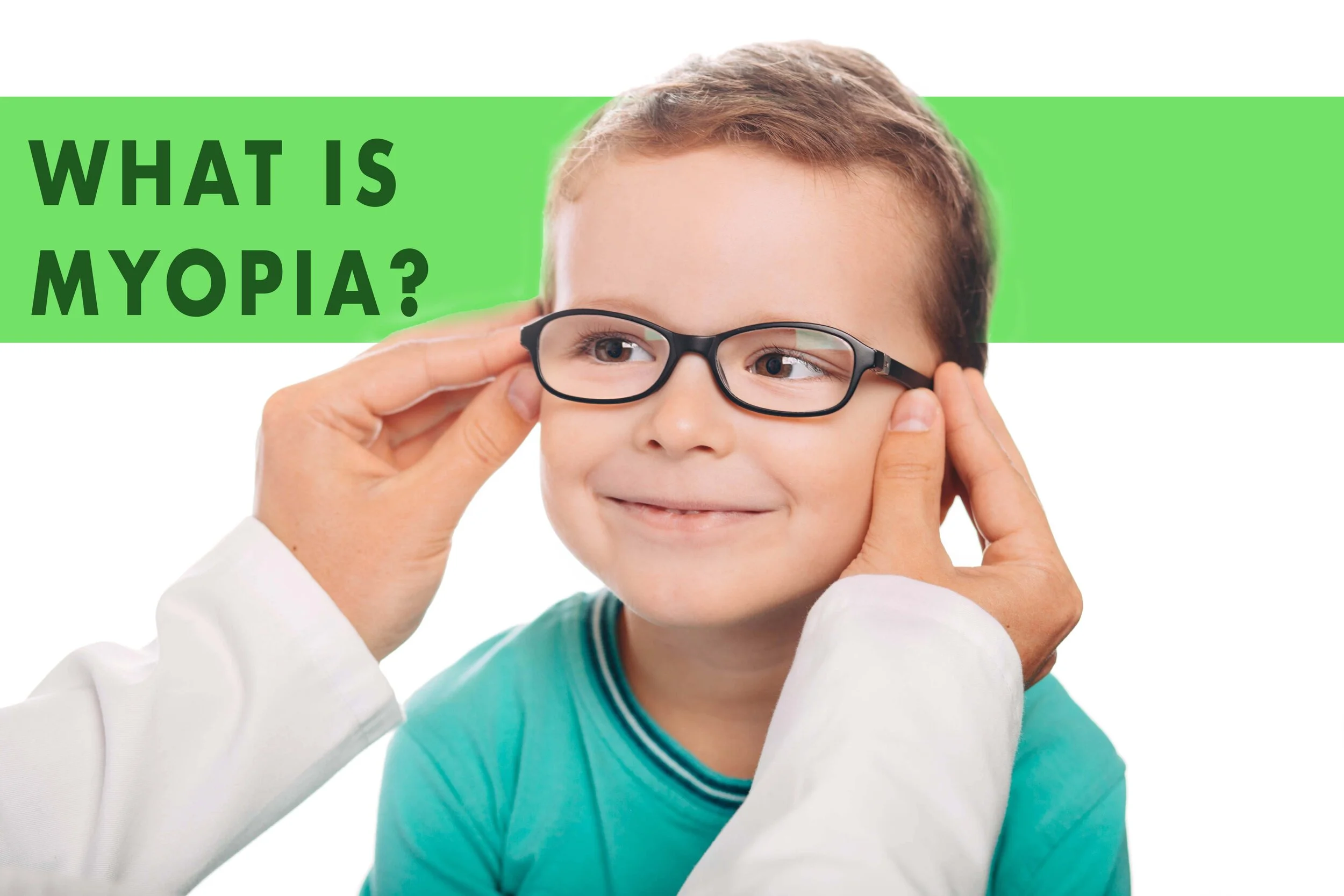“What is Myopia?” by Dr Mark Paroli
Do you know someone with Myopia? Probably you do! Did you know that Myopia is the most common Ocular Disorder?
Last 2010, it was estimated that there are 1.9 billion Nearsighted people world wide, and it’s projected to increase.
Adults, as well as children can have Myopia, and that children often don’t know they have it until they start complaining or their teachers/parents notice signs of struggle reading at far. In this “Ask the Paroli’s” article, Dr Mark Paroli was asked some questions about Myopia, and how to manage this eye condition.
Question #1: What is Myopia?
A Normal Eye(Left) and an Eye with Myopia(Left). The eye with the Myopia is longer & the image is focused in front of the Retina, instead of on it.
Myopia or Nearsightedness, in layman's term, is the condition when your vision is clear at near, and blurry at far, assuming there is no need for reading prescription, and no presence of eye disease.
Physiologically, it’s because of the image you are fixating on is focused in front of the Retina instead of on the Retina. This defocus can be influenced by the Length of the Eye, the Thickness of the Crystalline Lens, or the thickness and curvature of the Cornea.
Question #2: How do you get Myopia or Nearsightedness?
It is still unknown how we get the visual problem, and there are still researches being conducted.
Too much near work may influence the progression of Myopia
However, there is significant evidence that we can inherit Myopia from both or just one parent. Also, Myopia can be influenced depending on the person's lifestyle. For example, a child who spends more time reading, playing with their Tablets or Smartphones, or simply doing near work for a long period of time most likely would develop Myopia.
It can be a combination of both, where a child inherited their parent’s myopia while at the same time is into gadgets, or anything that requires them to look at something near for a long time.
Question #3: How young can you get Myopia?
Dra. Baby Paroli, founder and CEO of Soliman Paroli Eyecare, performing Retinoscopy as part of Soliman Paroli Eyecare’s vision exam.
Children may get Myopia as early as they are born. For some, theirs develop faster during their school year when reading books becomes part of their everyday activities. If they get their Nearsightedness at an early age, it may progress as years goes by, as the eye becomes longer. It usually slows down at before or after their early 20's.
Adults may also get it during later in their life. In most times it's usually temporary, we call this "Pseudo myopia". Some of the causes are visual stress from prolonged near work, and sometimes because of systemic diseases, sch as Diabetes.
Question #4: How does an Eyecare practitioner check for Myopia?
The most common way is via the Auto-refractometer, usually termed as the "Computerized Eye Exam" in commercial practices.
Afterwards, your eyecare practitioner may manually get the degree of Myopia you have through the "Retinoscope".
After the doctor manually gets your eye's power, it's time to let the patient wear the prescription to check for its clarity and to apply the most comfortable prescription.
Sometimes, an eyecare practitioner may need to instill a cycloplegic drop just to get a better idea of your final prescription. This is very useful, especially to those with tired eyes, or to children who aren't very compliant.
Question #5: How do you manage Myopia?
The common ways are Eyeglasses, Soft and Hard Contact Lenses, Orthokeratology. Refractive surgeries are also available, such as Implantable Contact Lenses and LASIK.
For children, as mentioned above, it may progressively increase yearly. There is no cure for Myopia, BUT there are various ways to slow down the progression of a child's nearsightedness using Lenses, Contact Lenses, or Pharmaceutical drops. Contact Lenses & Drops having the highest effectiveness.
Your eyecare provider can explain each option to you. It’s important to have their vision examined as young as possible.
About Dr Mark Paroli:
Dr Mark Paroli is a board-certified Optometrist who has special interest in Ocular Prosthesis, Orthokeratology, and Scleral Lenses, particularly in dealing with Keratoconus.
He is an advocate of children with Low Vision, and an active volunteer of Resources for the Blind, inc. He is also an advocate of Myopia on children, and their management in slowing down the progression.
Other “Ask the Paroli’s” article for Sight Saving 2020:








